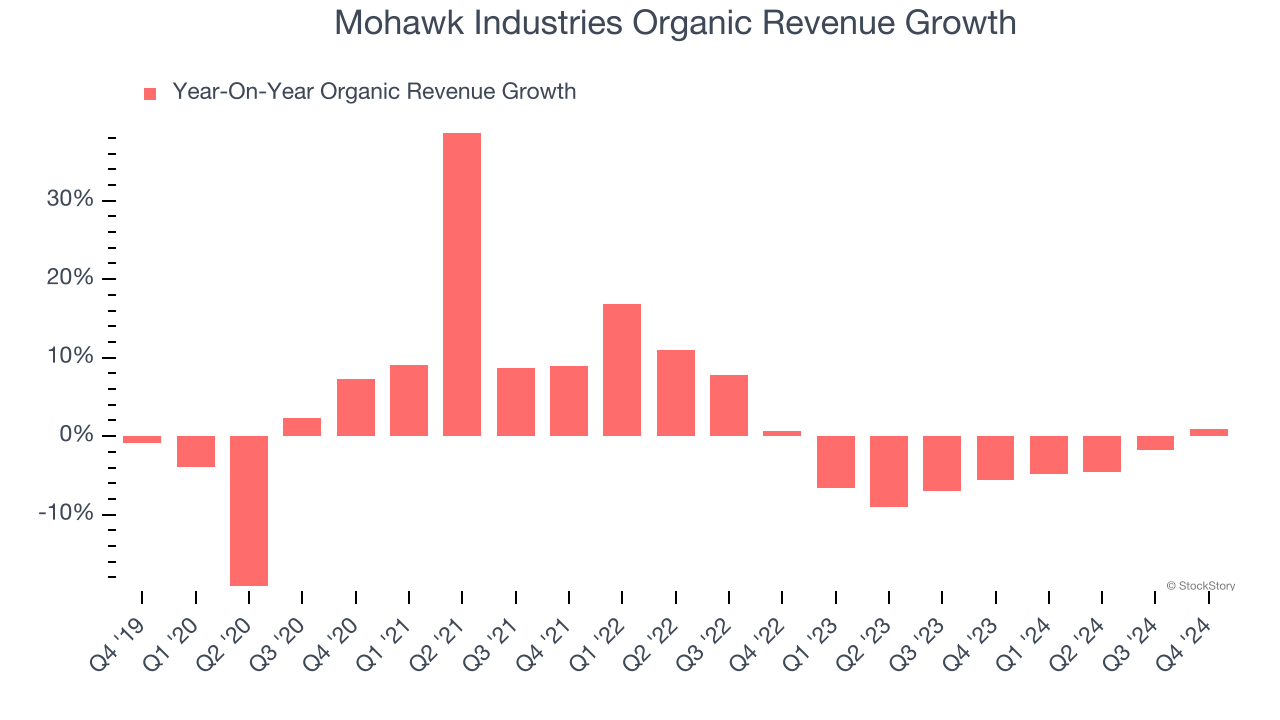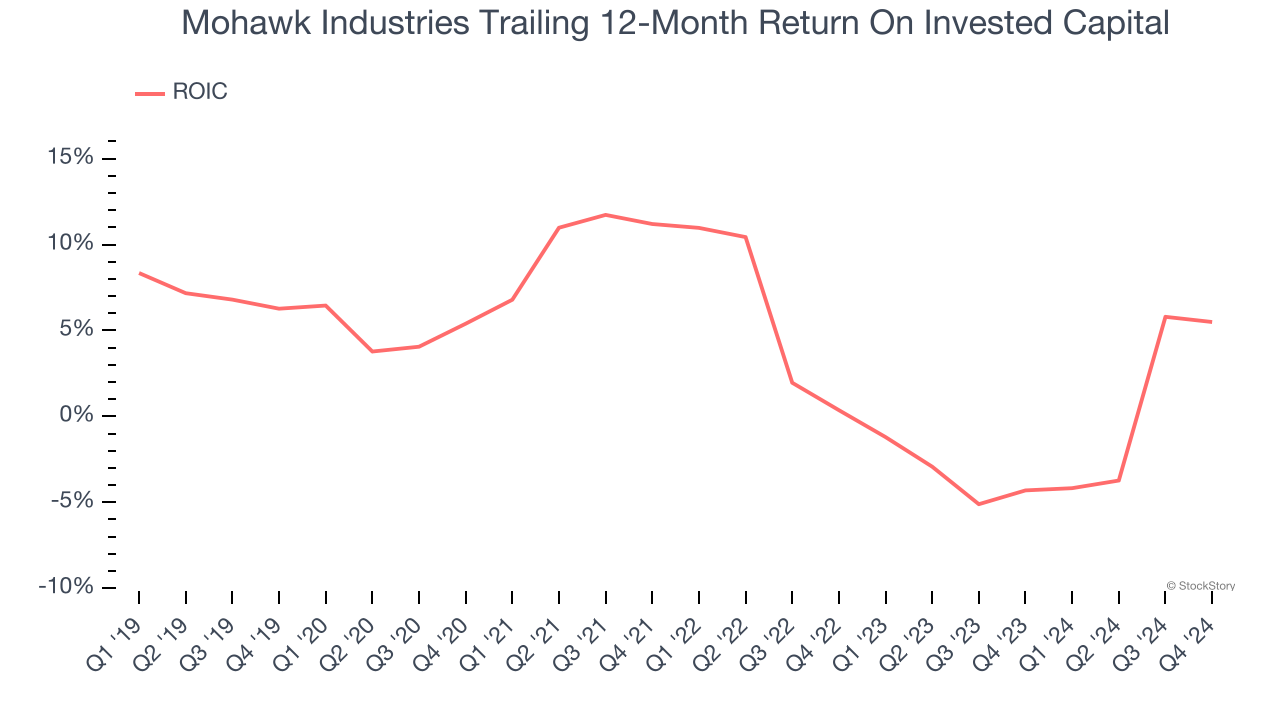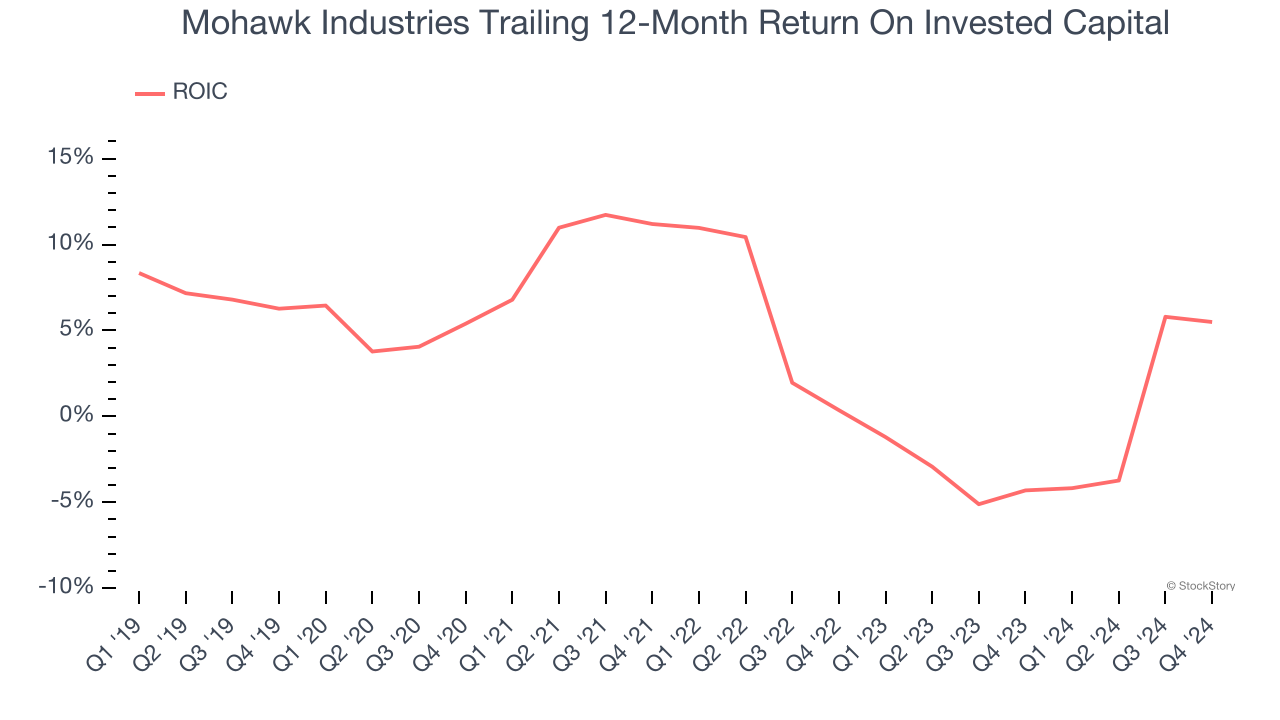
Mohawk Industries’s stock price has taken a beating over the past six months, shedding 27.9% of its value and falling to $115 per share. This may have investors wondering how to approach the situation.
Is there a buying opportunity in Mohawk Industries, or does it present a risk to your portfolio? See what our analysts have to say in our full research report, it’s free.
Even though the stock has become cheaper, we don't have much confidence in Mohawk Industries. Here are three reasons why we avoid MHK and a stock we'd rather own.
Why Do We Think Mohawk Industries Will Underperform?
Established in 1878, Mohawk Industries (NYSE:MHK) is a leading producer of floor-covering products for both residential and commercial applications.
1. Core Business Falling Behind as Demand Declines
Investors interested in Home Furnishings companies should track organic revenue in addition to reported revenue. This metric gives visibility into Mohawk Industries’s core business because it excludes one-time events such as mergers, acquisitions, and divestitures along with foreign currency fluctuations - non-fundamental factors that can manipulate the income statement.
Over the last two years, Mohawk Industries’s organic revenue averaged 4.8% year-on-year declines. This performance was underwhelming and implies it may need to improve its products, pricing, or go-to-market strategy. It also suggests Mohawk Industries might have to lean into acquisitions to grow, which isn’t ideal because M&A can be expensive and risky (integrations often disrupt focus). 
2. Previous Growth Initiatives Haven’t Impressed
Growth gives us insight into a company’s long-term potential, but how capital-efficient was that growth? A company’s ROIC explains this by showing how much operating profit it makes compared to the money it has raised (debt and equity).
Mohawk Industries historically did a mediocre job investing in profitable growth initiatives. Its five-year average ROIC was 3.6%, lower than the typical cost of capital (how much it costs to raise money) for consumer discretionary companies.

3. New Investments Fail to Bear Fruit as ROIC Declines
A company’s ROIC, or return on invested capital, shows how much operating profit it makes compared to the money it has raised (debt and equity).
We like to invest in businesses with high returns, but the trend in a company’s ROIC is what often surprises the market and moves the stock price. Over the last few years, Mohawk Industries’s ROIC has unfortunately decreased. Paired with its already low returns, these declines suggest its profitable growth opportunities are few and far between.

Final Judgment
Mohawk Industries falls short of our quality standards. Following the recent decline, the stock trades at 10.8× forward price-to-earnings (or $115 per share). While this valuation is fair, the upside isn’t great compared to the potential downside. There are better stocks to buy right now. Let us point you toward one of our all-time favorite software stocks.
Stocks We Like More Than Mohawk Industries
The elections are now behind us. With rates dropping and inflation cooling, many analysts expect a breakout market - and we’re zeroing in on the stocks that could benefit immensely.
Take advantage of the rebound by checking out our Top 5 Growth Stocks for this month. This is a curated list of our High Quality stocks that have generated a market-beating return of 175% over the last five years.
Stocks that made our list in 2019 include now familiar names such as Nvidia (+2,183% between December 2019 and December 2024) as well as under-the-radar businesses like Sterling Infrastructure (+1,096% five-year return). Find your next big winner with StockStory today for free.
